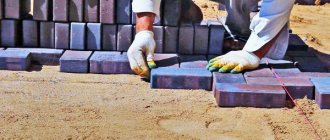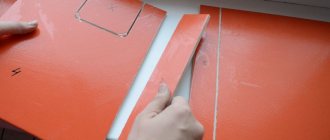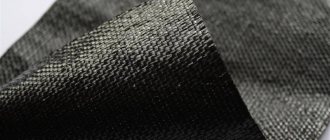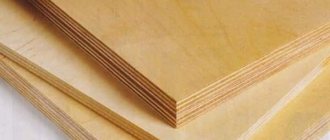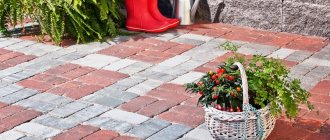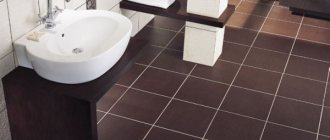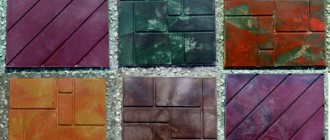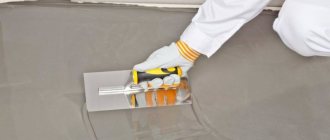general description
Geotextiles are a type of woven and non-woven material for technical purposes. For its production, synthetic threads from polyester, polypropylene are used, sometimes with the addition of natural fibers of cotton or wool. Polyester fabric is the result of processing recycled plastic materials. It is not subject to rotting and does not decompose for several decades. The threads from which the fabric is assembled are short, and the surface of the material has a fleecy texture. The color can be any. For polypropylene material, specially produced thread (primary raw material) is used. The material has several layers securely connected to each other. It is made from 1 continuous thread, and its strength allows geotextiles to be used even for constructing the basis for buildings or runways. It can be distinguished from polyester fabric by its lack of lint and dense structure. Any type of geofabric has an elastic structure that allows it to stretch slightly according to the relief and tightly cover the surface without leaving air bubbles. For different purposes, materials with a thickness of 0.5-5 mm are produced, which allows you to choose the right base for paths with different loads. When constructing paths, geotextiles perform an important function as a drainage layer. Geotextiles allow moisture to pass in only one direction, so it quickly leaves the pit. Even when the supporting layer of the path freezes, it does not swell and does not break the coating.
What is geotextile: types and technical characteristics
This is a geosynthetic material that is available in two types on the market: woven and non-woven. The manufacturing technologies of the two modifications are very different from each other. Accordingly, the characteristics of the materials are different. But they have one thing in common - high tensile and tensile strength.
Woven option
This type of geotextile consists of two types of threads that are woven together in perpendicular directions. The first are polyamide threads: polyester or polyethylene. The second are polyester threads.
The result of the woven process is a high-strength fabric, light and flexible, capable of withstanding loads of up to 1000 kN/m². Of all the geotextile models offered, this is the most durable. Therefore, it is often used in road work to separate backfilled layers of various materials, as well as for soil reinforcement. But it should be noted that this type is the most expensive. And although it is ideal for forming paths and alleys, covered with paving slabs, it is rarely used in suburban areas.
Woven geotextiles made from polyester threads Source orange-geo.ru
Non-woven option
It should be noted that this variety is divided into several groups, which differ from each other in the method of production. Groups three:
- needle-punched;
- thermal bonding;
- hydrofastening (a technology that has appeared recently, but is not yet widely used).
The technology used in the first group is pulling polymer threads through a base consisting of fibers. The result is a porous fabric that easily allows air and water to pass through in different directions. Typically, needle-punched geotextiles are used in drainage systems. This fabric allows water to pass through, but retains soil particles, thereby protecting drainage from silting.
Needle-punched geotextile in roll Source tugongbujiage.com
The material from the second group is made by gluing threads together under high temperatures. The polymer melts and sticks together. The fabric is obtained with small pores, but with no less low technical characteristics, like needle-punched fabric. And if the latter is used to cover drainage system pipes directly, then the latter is used in the so-called “soft drainage”. This is when the pipes are covered with crushed stone and wrapped with geotextile on top.
It should be noted that thermally bonded material with small pores quickly becomes clogged with soil. This is its disadvantage compared to other options. But it is he who can show himself well when forming a cushion for laying paving slabs. In addition, it is cheaper than other models.
Thermally bonded geotextile in roll Source shivsons.in
Let us add that non-woven geotextiles are presented on the market in a wide variety of types, which differ from each other in the density of the fabric. Material with low density is indicated by this indicator - 100 g/m², with high density - 600 g/m². It is clear that the higher the density, the higher the technical and operational characteristics, and, accordingly, the higher the price of the product.
Let us indicate which non-woven geotextiles can be used for laying under paving slabs. The best option is a material with a density from 200 to 600 g/m². Let us immediately indicate how much geotextiles cost for laying paving slabs.
| Geotextile density, g/m² | Price, rub./m² |
| 200 | 25 |
| 250 | 30 |
| 300 | 35 |
| 350 | 40 |
| 400 | 47 |
| 450 | 48,5 |
| 500 | 52 |
| 550 | 58 |
| 600 | 70 |
See also: Catalog of companies that specialize in landscape design of sites.
Which geotextile is better to choose?
Russian professional builders and landscape designers prefer to use heat-fixed canvases. Due to its high reinforcing capacity, the material is suitable for fixing any soil and laying it under different types of buildings. When laying paths, its high strength may be unnecessary. When constructing a car area or driveways near a private garage or public place, it is best to use geotextiles with bonded fibers. But for pedestrian paths in private households, you can choose a different type. The drainage properties of needle-punched materials are even better. Special strength under light loads is not required and can be saved due to the lower cost of needle-punched geotextiles. When purchasing material, you need to take into account other properties of the product:
- the density is selected in direct proportion to the expected load (130-230 g/m²);
- the ability to stretch should not be more than 60%, otherwise the groove in the pit will sag and the coating will crack;
- the width of the fabric, calculated depending on the depth of the pit and the width of the path.
How to replace geotextiles when laying paving slabs
If it is not possible to purchase geotextiles, it can be replaced with other materials:
- Ruberoid. But it is short-lived and, moreover, does not allow accumulated moisture to go into the ground under the pillow.
- Plaster mesh. The disadvantage of using this material is that water easily penetrates into the layered structure of the pillow. Thus, the paved part is washed away.
- Dornit is an innovative material from Russian manufacturers that allows you to ensure high-quality tile paving work. The fabric is white in color and is made using non-woven needle-punched technology. Depending on the need, the buyer can choose rolls, the width of which varies from 2 to 5 m. Dornit performs two main functions - it serves as effective drainage and also reinforces the surface.
- Another option that can replace geotextiles is black polyethylene film made from stabilized material. However, if you choose this material, it is necessary that its thickness be at least 300 microns. Only in this case will the film be able to withstand the increased load when paving paths. But, the use of stabilized polyethylene has more negative aspects than advantages. Even despite its cheapness.
However, it is necessary to take into account that in addition to the layer of crushed stone and sand, the material for creating a cushion under the tile must be securely fixed, for which anchors are used for fixation.
Laying and fastening technology
In order for the geofabric to fully perform its functions, it must be laid in accordance with the technology. Particular attention is paid to determining the front side of the fabric: this part should be on top in order to allow moisture to pass from the pit into the underlying soil. Traditional technology for installing the material requires spreading it twice: under the sand cushion (to perform the drainage function) and on it. The second layer of material protects the sand layer from being washed away by water coming from above during heavy rain. The first layer of geotextile should be laid in the following sequence:
- dig a trench along the pre-marked contours of a path or area for transport;
- pour a thin layer of sand (2-3 cm) onto the bottom, level it and compact it;
- lay a layer of geofabric: it should form an overlap on the edges of the trenches, so the width of the material is calculated when drawing up sketches and drawings (double the depth plus the width of the excavation for the base).
If you need to connect several strips of material, they are placed overlapping at joints 15-25 cm wide. To ensure moisture resistance of the seam, it is sealed or a construction stapler is used. Soldering is carried out with a construction hairdryer: at high temperatures, the fiber melts and glues the pieces of geofabric together well. You can connect both longitudinally laid and transverse fragments of the trench bottom covering. The installation is completed by fixing the non-woven material to the ground with long construction staples. The puncture sites must be sealed with bitumen.
Sand is again poured onto the fabric to a height of 2-3 cm. This will protect the material from the effects of sharp chips of crushed stone when compacting the drainage layer. After laying and compacting, 2-3 cm of sand are scattered on top of it and curb stones are placed. Then a new layer of geotextile is laid. It should also form edges around the edges, but not above the soil level. The fabric is fixed with staples, the length of which should be sufficient to go 5-7 cm into the ground, breaking through layers of drainage and sand. This is done to ensure that the material does not move while backfilling the prancing layer of a mixture of sand and crushed stone, or footing. It is also advisable to lay a thin sand cushion under the supporting layer, which includes sand and crushed stone of the middle fraction. When the complex pie of the base of the path has been laid, they proceed to the installation of the selected coating.
The feasibility of laying geotextiles for paving slabs and its use in the drainage system
Considering the significant material, technical, and labor costs, for repeated repairs it is necessary to strive to reduce them to a minimum. Let's consider methods for solving problems related to the operation of pedestrian zones and the operation of the drainage system.
- Soil heterogeneity
. Often, when laying paving stones, workers are faced with soil heterogeneity, which leads to additional costs. The use of geotextiles solves this problem, so the decision to buy a geotextile is profitable and balanced. By the way, geosynthetics are indispensable when installing mesh gabions. - Uneven load
on the working surface. Pedestrian paths are located in close proximity to the vehicle traffic area along the roads. You can often see cars parked on sidewalks. For this reason, it is imperative to reinforce such zones with durable geotextiles and additional materials that prevent soil from being pushed through. High-quality geotextiles, laid in accordance with the technological process, create a reliable separating reinforcing layer. This solves the problem of soil subsidence under the influence of excessive loads or other reasons. - The accumulation of moisture
from precipitation under the paving slabs, which also leads to additional shrinkage of the coating level. But the opposite process can also be observed, when in the autumn-winter period water from snow or rain does not have time to go into the soil and freezes under the cover. This leads to the level of the tiles rising and the formation of uneven surfaces on the work surface. The use of geotextiles creates a separation layer that allows moisture to pass through. - Clogged drainage pipes.
An important element of the drainage system is a filter, which can be used as a thermally bonded geotextile, which is used to wrap the drainage pipe. It is very thin and durable, practically not subject to stretching and silting. These measures will significantly increase the service life of the drainage system. - Weed and grass control.
Another useful feature of geotextiles is the ability to prevent the germination of roots and plants themselves. When weeds are actively growing, you don’t even have to think about whether you need to put geotextiles under the grass paving slabs. By using this environmentally friendly insulating material as an underlay, you can once and for all get rid of unwanted wild vegetation on your paving slabs.
Based on the above, we can conclude whether it is necessary to place geotextiles under the paving slabs. It is profitable to select geotextiles and use them in road work, in private and municipal households. Reducing costs and saving labor resources associated with the maintenance and use of facilities extends their useful life. This allows us to take a fresh look at ways to save and rationally use resources, and forces us to abandon outdated, previously used methods of doing work.
Manufacturers and prices
The production of geotextiles is widespread both in Russia and abroad. The construction markets of our country offer goods from German and Czech manufacturers. Geopol brand geofabrics are the most in demand. Among Russian materials, geotextile products Dornit and Stabitex are in demand. The first is intended for the formation of pedestrian paths and lightly loaded areas. For driveways or parking lots, it is better to use Stabitex. In terms of performance characteristics, it corresponds to imported Typar fabric. The average cost of geomaterials of different types is 50-100 rubles. for 1 m². The length of the roll depends on the density of the fabric: the higher this indicator, the shorter the roll. For geotextiles used for garden paths, the average length of the material in a roll will be 90-100 m. The width ranges from 2-6 m and allows you to purchase the material of the desired size.
Choosing material for sidewalks
The base, which is actively used in modern conditions to separate the sand layer from the crushed stone layer, must have excellent ability to transmit moisture. Geotextiles, which need to be laid directly under the sidewalk, are designed to withstand certain mechanical loads that arise as a result of compaction of the pre-prepared sand base due to moisture combined with crushed stone.
READ Types of glue for linoleum on concrete floors and gluing technology
The massive weight of passing vehicles and pedestrians does not play any role in this case.
The textile covering should not lose its drainage properties under the influence of additional factors:
- silty;
- clayey;
- mud;
- viscous organic particles.
From the closest competitors
The described products of the Stabilenka brand do not lag behind in terms of durability. However, its mechanical strength and excessive rigidity are not always suitable for laying paving slabs with high quality. As for the geofabric presented by the German one, it is distinguished by its versatility, it is characterized by high longitudinal strength and excellent adhesion even with loose types of soil.
READ Instructions for using liquid glass for concrete
The geotextile fabric produced by JSC Mogilevkhimvolokno exhibits good characteristics. Having a density of 200 g/m2, it is suitable for equipping sidewalk areas that are lined on stable soils with little clay. Geofabrics such as “Lavsan Geo”, “Kanvalan 200”, “Geobel 150” have approximately the same properties of creating a separating layer and sufficient reinforcement.
These grades of material are suitable for working on various types of soil without preliminary arrangement of a two-layer crushed stone bed. The main thing is that the geotextile is laid with the correct side in accordance with the instructions from the manufacturer.
It is quite possible to replace geotextiles when laying paving slabs from one manufacturer with another analogue. But before that, you should carefully study the features of the materials of interest, compare their technical characteristics, and then make the final choice. If desired, the reinforcing sheet can be replaced by additional compaction of several layers of sand using special gasoline or electric units. A good result is achieved by mixing sand and fine granite screenings. But geotextiles still have improved properties , do not require special compaction, and are installed quickly.
Best Representative
Many experts agree that for laying the described paths, a geotextile density of 150 g/m2 is sufficient. This is not entirely true; it is recommended to compare this indicator with the stability of the soil, which is the basis for paving slabs. It is also important to take into account the depth of freezing and the ability to saturate with moisture. The density of the geotextile can decrease with increasing rigidity of the soil base.
READ Paint for concrete: types of wear-resistant materials for outdoor work
If there is no drainage, a density indicator of at least 250 g/m2 will help you decide what geotextile is needed for laying paving slabs.
In winter, such material will prevent the sand base from unwanted failures and swelling, which can lead to premature repair of the constructed paths.
As for the leading positions, they are occupied by the following manufacturers of geotextiles: the American "Taipar" and "Dornit" - a domestic representative. The products of these brands are optimally suited for installing tiles. Imported material is somewhat superior to its Russian counterpart in mechanical strength and stability, but it is also distinguished by its high price.
Specialists for whom the cost of consumables is relegated to the background, and the quality of installation is of paramount importance, prefer Taipar. Practice shows that even the lightest brands of such geotextiles are highly effective when combined not only with tiles, they can be laid under asphalt pavement or paving stones.
At the same time, do not underestimate the material produced by Dornit, which performs well provided that all the subtleties of the technology for laying paths and tiled areas are followed. It is also worth maintaining all parameters regarding the thickness of the layers of crushed stone and sand.

